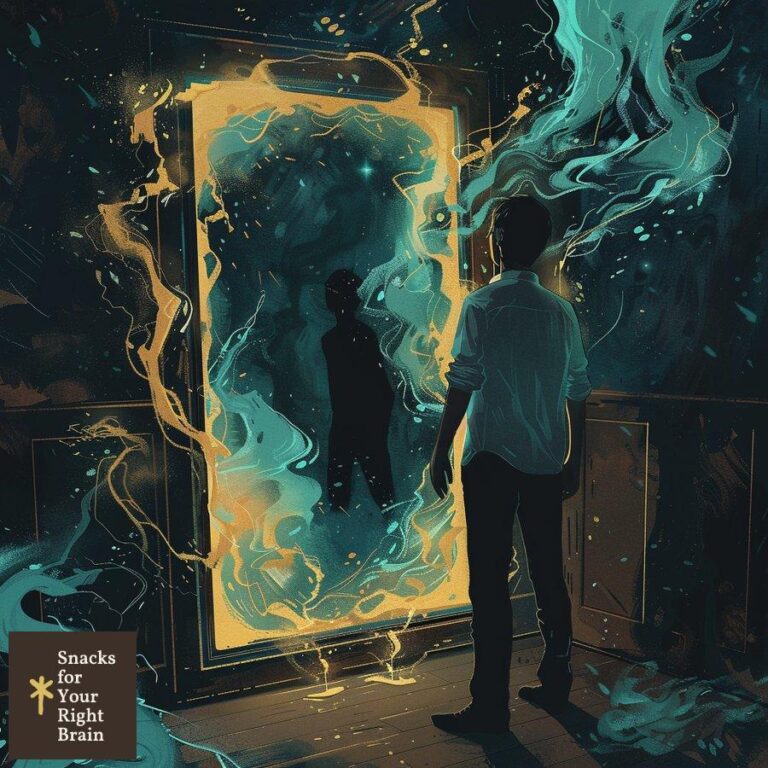What Are Some Examples of Irony in a Short Story
What is irony in literature?
Irony is a literary device that creates a contrast between what is expected or intended and what actually occurs. In literature, irony is used to evoke emotions, create humor, or make a point. There are several types of irony, including:
- Verbal irony: When a character says the opposite of what they mean, often for comedic effect.
- Situational irony: When an outcome is very different from what was expected or intended.
- Dramatic irony: When the audience knows something that the characters do not.
Irony can be used in various forms of literature, including short stories, novels, poems, and plays. It is a powerful tool for writers to create depth, complexity, and meaning in their work.
How does situational irony enhance short stories?
Situational irony is particularly effective in short stories because it can quickly create tension, surprise, and a twist in the plot. By setting up an expectation and then subverting it, writers can engage readers and make them think about the deeper themes or messages of the story.
For example, in Shirley Jackson’s “The Lottery,” the townspeople gather for an annual ritual that the reader expects to be a celebration. However, as the story progresses, it becomes clear that the “lottery” is actually a brutal stoning of one of the villagers. This unexpected twist creates a powerful sense of irony and horror.
Situational irony can also be used to highlight the absurdity or hypocrisy of certain situations or characters. In Kurt Vonnegut’s “Harrison Bergeron,” a dystopian society attempts to create equality by handicapping people with physical or mental advantages. The irony lies in the fact that this system actually perpetuates inequality and oppression.
By using situational irony effectively, writers can create memorable and thought-provoking short stories that linger in the reader’s mind long after the last page is turned.
What are classic examples of dramatic irony in short fiction?
Dramatic irony occurs when the audience knows something that the characters do not. This creates tension and suspense as the characters unknowingly move towards a fate that the reader can anticipate.
One classic example of dramatic irony in short fiction is “The Cask of Amontillado” by Edgar Allan Poe. In this story, the narrator, Montresor, lures his enemy, Fortunato, into the catacombs under the pretense of sharing a rare sherry. The reader knows that Montresor plans to entomb Fortunato alive, but Fortunato remains oblivious to the danger until it is too late.
Another example is “The Gift of the Magi” by O. Henry. In this story, a young couple, Jim and Della, each sell their most valuable possession to buy the other a Christmas gift. Della sells her hair to buy a chain for Jim’s prized pocket watch, while Jim sells his watch to buy combs for Della’s hair. The irony lies in the fact that their gifts are rendered useless by the sacrifices they made to obtain them.
Dramatic irony can create a sense of unease or even horror as the reader watches the characters unknowingly move towards their fate. It is a powerful tool for writers to engage their audience and explore themes of human nature, fate, and the consequences of our actions.
How do modern authors use verbal irony in their stories?
Verbal irony occurs when a character says something that is the opposite of what they mean. This can be used for comedic effect, to highlight a character’s personality, or to make a larger point about society or human nature.
One modern author who uses verbal irony effectively is George Saunders. In his short story “Tenth of December,” a young boy named Robin encounters a suicidal man named Saunders in the woods. Despite the heavy subject matter, Saunders injects moments of dark humor and verbal irony into the dialogue. For example, when Robin asks Saunders if he is a “bad guy,” Saunders replies, “Oh, I’m the worst. The absolute worst.”

Another example is Roald Dahl’s “Lamb to the Slaughter.” In this story, a pregnant woman named Mary Maloney kills her husband with a frozen leg of lamb and then serves the murder weapon to the investigating police officers. The irony lies in the fact that the officers unknowingly consume the evidence of their own investigation.
Verbal irony can also be used to create a sense of distance or detachment between the reader and the characters. In Shirley Jackson’s “The Lottery,” the villagers discuss the upcoming ritual in a casual, matter-of-fact way that contrasts with the horror of what is about to unfold.
By using verbal irony skillfully, modern authors can add depth, complexity, and humor to their stories while also making larger points about society, human nature, and the human condition.
What role does irony play in science fiction short stories?

Science fiction short stories often use irony to explore the consequences of technological advancement, the nature of humanity, and the complexities of the human condition. By creating futuristic scenarios and then subverting expectations, science fiction writers can make powerful statements about the present day.
One classic example of irony in science fiction is Isaac Asimov’s “The Last Question.” In this story, a series of scientists and computers attempt to solve the ultimate question of how to reverse entropy and save the universe from heat death. The irony lies in the fact that the answer is revealed to be a simple one that has been with humanity all along.
Another example is Ray Bradbury’s “The Veldt.” In this story, a family lives in a technologically advanced home that caters to their every need. The irony lies in the fact that the children become so dependent on and obsessed with the technology that they end up using it to kill their own parents.
Science fiction writers can also use irony to highlight the absurdity or hypocrisy of certain societal trends or beliefs. In Philip K. Dick’s “The Minority Report,” a future society uses psychic powers to predict and prevent crimes before they occur. The irony lies in the fact that this system actually perpetuates injustice and oppression.
By using irony effectively, science fiction writers can create thought-provoking stories that challenge readers to think about the world they live in and the potential consequences of their actions.
How is irony employed in flash fiction and micro stories?

Flash fiction and micro stories are extremely short forms of storytelling, often ranging from just a few sentences to a few hundred words. Despite their brevity, these stories can still effectively employ irony to create a powerful impact on the reader.
One technique that flash fiction and micro story writers use is the twist ending. By setting up an expectation and then subverting it in the final lines, writers can create a sense of irony and surprise. For example, in the micro story “For Sale: Baby Shoes, Never Worn” by Ernest Hemingway, the irony lies in the fact that the baby has died, leaving the parents with unworn shoes.
Another technique is to use irony to highlight the absurdity or futility of certain situations. In the flash fiction story “Dinosaur” by Lydia Davis, a woman becomes obsessed with a dinosaur skeleton in a museum, only to realize that the skeleton is not real. The irony lies in the fact that the woman’s fixation on the fake dinosaur is itself a kind of absurdity.
Flash fiction and micro story writers can also use irony to create a sense of ambiguity or open-endedness. In the micro story “The Egg” by Andy Weir, a man wakes up to find that he is actually God, having lived countless lives as different people throughout history. The irony lies in the fact that the story raises more questions than it answers, leaving the reader to ponder the nature of existence and the meaning of life.
Despite their brevity, flash fiction and micro stories can still pack a powerful punch when it comes to irony. By using twist endings, absurdity, and ambiguity, writers in these genres can create memorable and thought-provoking stories that linger in the reader’s mind long after the last word is read.
What techniques can readers use to identify irony in short stories?
Identifying irony in short stories requires close reading and attention to detail. Here are some techniques that readers can use:
-
Look for contrasts: Irony often involves a contrast between what is expected and what actually occurs. Pay attention to moments where the story subverts your expectations.
-
Note the tone: Ironic statements often have a particular tone, such as sarcasm, mockery, or exaggeration. Listen for language that seems to be saying one thing but actually means the opposite.
-
Consider the context: Irony often depends on the larger context of the story. Look for moments where the characters’ words or actions take on new meaning when viewed in light of the story’s themes or events.
-
Pay attention to dramatic irony: If you notice that you know something that the characters do not, you may be dealing with dramatic irony. Look for moments where the characters are unaware of important information that the reader possesses.
-
Analyze the ending: Many stories use irony in their final moments to create a twist or surprise. Pay close attention to the last lines of the story to see if they subvert your expectations in an ironic way.
By using these techniques and reading closely, readers can identify and appreciate the many forms of irony that short story writers employ to create depth, complexity, and meaning in their work.
How does irony impact the reader’s experience of a short story?
Irony can have a powerful impact on the reader’s experience of a short story. Here are some of the ways it can affect the reader:
-
Surprise and delight: Ironic twists and surprises can create a sense of delight and satisfaction in the reader. When a story subverts expectations in an unexpected but clever way, it can leave the reader feeling entertained and intellectually stimulated.
-
Deeper engagement: Irony can draw the reader into the story more deeply. When a story uses irony to make a point or highlight a theme, it requires the reader to think critically and engage with the text on a deeper level. This can lead to a more rewarding and memorable reading experience.
-
Emotional impact: Irony can also evoke strong emotions in the reader. When a story uses irony to create a sense of tragedy, horror, or absurdity, it can leave a lasting emotional impression. Readers may feel shocked, disturbed, or even moved to tears by the ironic twists and turns of a story.
-
Ambiguity and open-endedness: Some stories use irony to create a sense of ambiguity or open-endedness. By leaving certain questions unanswered or raising more questions than it answers, a story can leave the reader pondering its deeper meanings and implications long after the reading is done.
-
Humor and wit: Irony is often used for comedic effect. When a story employs verbal irony or situational irony for humorous purposes, it can leave the reader laughing and entertained. Clever, witty uses of irony can showcase the writer’s skill and add to the reader’s enjoyment of the story.
Overall, irony can enhance the reader’s experience of a short story by creating surprise, engaging the reader intellectually and emotionally, and showcasing the writer’s skill and artistry. By using irony effectively, writers can create short stories that linger in the reader’s mind and leave a lasting impact.
What are common challenges in writing ironic short fiction?

Writing ironic short fiction presents several challenges for writers. Here are some of the most common ones:
-
Balancing irony with clarity: Writers must strike a careful balance between using irony effectively and ensuring that the story remains clear and comprehensible to the reader. Too much irony can lead to confusion or a sense of obscurity, while not enough can make the story feel flat or uninteresting.
-
Avoiding predictability: Once a writer establishes an ironic tone or style, there is a risk of becoming predictable or formulaic. Readers may begin to anticipate the ironic twists and turns, reducing the impact of the story. Writers must continually find new and unexpected ways to employ irony in their work.
-
Maintaining consistency: Irony can be a tricky device to maintain throughout an entire story. Writers must ensure that the ironic elements remain consistent with the story’s themes, characters, and overall tone. Inconsistencies or contradictions can undermine the effectiveness of the irony.
-
Striking the right emotional tone: Irony can evoke a range of emotions in readers, from humor to horror to tragedy. Writers must be careful to strike the right emotional tone and avoid jarring shifts that can undermine the story’s impact. Maintaining a consistent emotional register is crucial when using irony effectively.
-
Avoiding clichés: Certain types of ironic twists and turns have become clichéd over time. Writers must be careful to avoid relying on overused tropes or predictable plot devices. Finding fresh, original ways to employ irony is essential for creating compelling and memorable short fiction.
Despite these challenges, many writers continue to experiment with irony in their short stories, using it as a powerful tool for creating depth, complexity, and emotional impact. By mastering the art of ironic storytelling, writers can create short fiction that resonates with readers long after the final page is turned.
How has the use of irony in short stories evolved over time?
The use of irony in short stories has evolved significantly over time, reflecting changing literary trends and cultural contexts. Here are some of the key ways in which irony has evolved in short fiction:
-
Early use of irony: Irony has been used in short stories since the genre’s earliest days. Writers like Edgar Allan Poe and Guy de Maupassant employed irony to create surprise endings and highlight the absurdity of human nature. However, their use of irony was often more overt and less subtle than later writers.
-
Modernist experimentation: In the early 20th century, modernist writers like James Joyce and Virginia Woolf began experimenting with more complex and ambiguous forms of irony. They used irony to create a sense of fragmentation and uncertainty, reflecting the disillusionment and alienation of the modern age. Their use of irony was often more subtle and open-ended than earlier writers.
-
Postmodern playfulness: In the latter half of the 20th century, postmodern writers like Donald Barthelme and John Barth began using irony in a more playful and self-referential way. They employed irony to undermine traditional narrative structures and challenge readers’ expectations. Their use of irony was often more meta-fictional and less concerned with realism than earlier writers.
-
Contemporary experimentation: In the 21st century, writers continue to experiment with irony in short stories, often in combination with other literary devices like magical realism and metafiction. Contemporary writers like George Saunders and Karen Russell use irony to create a sense of absurdity and social commentary, reflecting the complexities of modern life.
-
Increased diversity: As the short story genre has become more diverse, writers from different cultural backgrounds have brought new perspectives to the use of irony. Writers like Jhumpa Lahiri and Junot Díaz use irony to explore issues of identity, immigration, and cultural displacement, reflecting their own experiences and those of their communities.
Overall, the use of irony in short stories has evolved from more overt and straightforward techniques to more complex and ambiguous forms. Writers have used irony to reflect the changing cultural and literary landscape, experimenting with new ways to create surprise, engage readers, and make larger points about the human condition.






